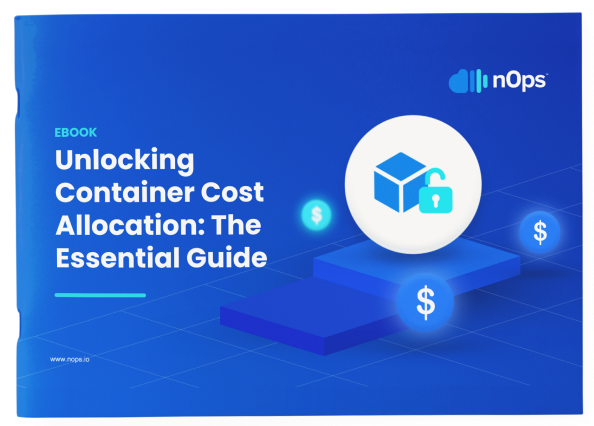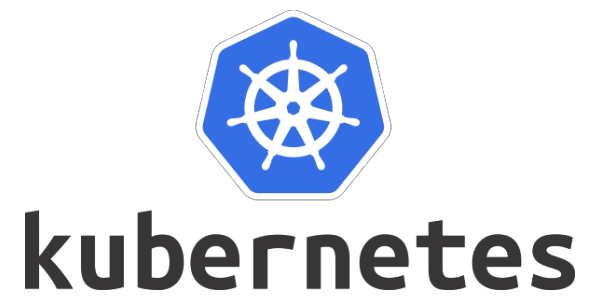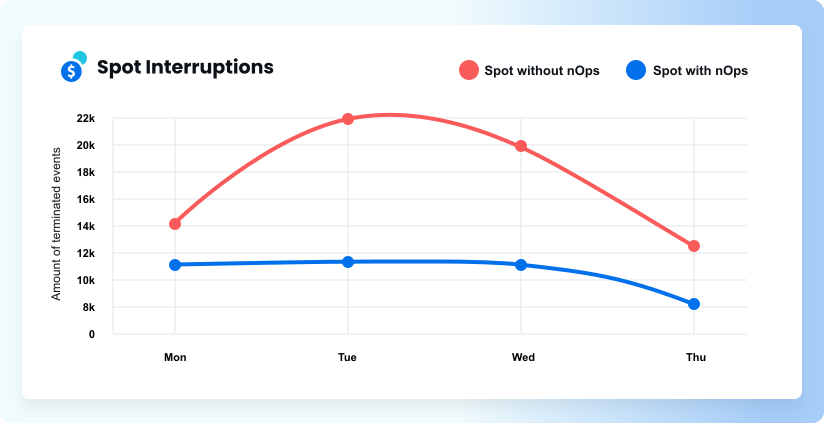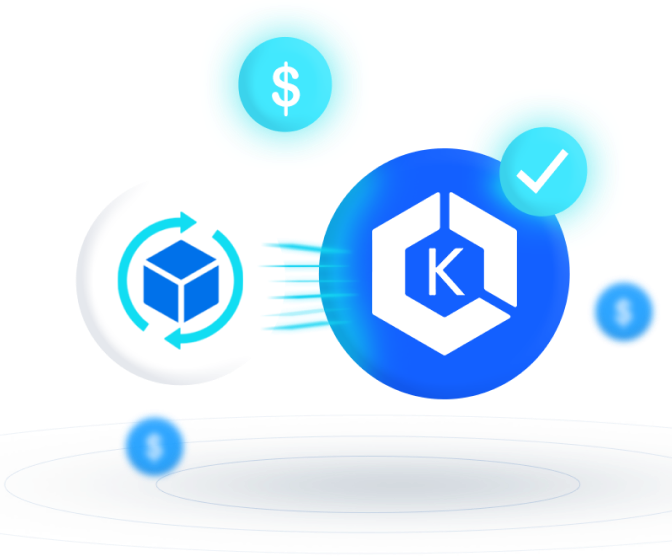- Blog
- EKS Optimization
- AWS EKS Vs. ECS: The Ultimate Guide
AWS EKS Vs. ECS: The Ultimate Guide
Last Updated: May 27, 2025, EKS Optimization
In today’s rapidly evolving technological landscape, containerization has emerged as a cornerstone of application deployment and management. By encapsulating applications and their dependencies into containers, organizations can achieve unparalleled efficiency, scalability, and portability levels. Amazon Web Services offers two main containerization services: Amazon Elastic Container Service (ECS) and Amazon Elastic Kubernetes Service (EKS).
AWS container services simplify the deployment, management, and scaling of containerized applications in the cloud. AWS ECS is a fully managed container orchestration service that makes running, stopping, and managing containers on a cluster easy. It is simple to use and integrates deeply with the AWS ecosystem, providing a secure and scalable environment for deploying applications.
On the other hand, AWS EKS brings the power of Kubernetes, an open-source system for automating deployment, scaling, and management of containerized applications, to the AWS cloud. EKS offers more flexibility and control, though it can be more complex to leverage. EKS automates critical tasks such as patching, node provisioning, and updates, allowing developers to focus on innovation rather than infrastructure management.
In this article, we will discuss ECS vs EKS and give an in-depth analysis of each service’s advantages, unique capabilities, and impact on scalability, reliability, cost-efficiency and developer productivity.
What is Container Orchestration?
In software development and deployment, containerization has revolutionized how applications are built, shipped, and run. This transformation has been facilitated mainly by containers, lightweight, standalone, and executable software packages that include everything needed to run a piece of software, including the code, runtime, system tools, libraries, and settings.
However, as the adoption of containerized applications has grown, especially in complex and dynamic cloud environments, the need for efficient management and orchestration of these containers has become paramount.
Container Orchestration Explained
Container orchestration automates container deployment, management, scaling, and networking. Imagine managing a single container on a single host; it’s straightforward. But when your application is comprised of multiple containers across multiple hosts, manually handling them becomes impractical. Orchestration tools manage these complexities, ensuring that the proper containers are running at the right time, can find each other and communicate, are adequately resourced, and are properly isolated for security and efficiency.
The core benefits of container orchestration include:
- Scalability: Automatically adjust the number of containers based on demand, ensuring applications can handle peaks and troughs in user traffic seamlessly.
- High Availability: Ensure applications are always available despite failures of individual containers or hosts, by distributing container instances across a cluster.
- Resource Efficiency: Optimize the use of underlying resources, reducing costs by ensuring containers are not over-provisioned and under-utilized.
- Deployment and Update Automation: Streamline and automate the deployment of new versions of applications and services, enabling continuous integration and continuous deployment (CI/CD) pipelines.
ECS vs EKS
Within the AWS ecosystem, two primary services offer container orchestration solutions: AWS Elastic Container Service (ECS) and AWS Elastic Kubernetes Service (EKS).
AWS ECS is a proprietary AWS container management service that provides an efficient and secure way to run and scale containerized applications on AWS. ECS is deeply integrated with AWS services. It provides a seamless experience for AWS users and is designed for simplicity, with the inherent trade-off of offering less fine-tuned control and flexibility. With ECS, there’s no need to manage a control plane, nodes, or add-ons, making it easier to get started. It is advantageous for quick deployments or when a more straightforward approach suffices. In addition, with ECS you don’t have to pay for a control plane, meaning that it can potentially be cheaper. For a deeper dive into how these costs play out in real-world scenarios, check out our AWS ECS pricing breakdown.
In today’s rapidly evolving technological landscape, containerization has emerged as a cornerstone of application deployment and management. By encapsulating applications and their dependencies into containers, organizations can achieve unparalleled efficiency, scalability, and portability levels. Amazon Web Services offers two main containerization services: Amazon Elastic Container Service (ECS) and Amazon Elastic Kubernetes Service (EKS).
AWS container services simplify the deployment, management, and scaling of containerized applications in the cloud. AWS ECS is a fully managed container orchestration service that makes running, stopping, and managing containers on a cluster easy. It is simple to use and integrates deeply with the AWS ecosystem, providing a secure and scalable environment for deploying applications.
On the other hand, AWS EKS brings the power of Kubernetes, an open-source system for automating deployment, scaling, and management of containerized applications, to the AWS cloud. EKS offers more flexibility and control, though it can be more complex to leverage. EKS automates critical tasks such as patching, node provisioning, and updates, allowing developers to focus on innovation rather than infrastructure management.
In this article, we will discuss ECS vs EKS and give an in-depth analysis of each service’s advantages, unique capabilities, and impact on scalability, reliability, cost-efficiency and developer productivity.
What is Container Orchestration?
In software development and deployment, containerization has revolutionized how applications are built, shipped, and run. This transformation has been facilitated mainly by containers, lightweight, standalone, and executable software packages that include everything needed to run a piece of software, including the code, runtime, system tools, libraries, and settings.
However, as the adoption of containerized applications has grown, especially in complex and dynamic cloud environments, the need for efficient management and orchestration of these containers has become paramount.
Container Orchestration Explained
Container orchestration automates container deployment, management, scaling, and networking. Imagine managing a single container on a single host; it’s straightforward. But when your application is comprised of multiple containers across multiple hosts, manually handling them becomes impractical. Orchestration tools manage these complexities, ensuring that the proper containers are running at the right time, can find each other and communicate, are adequately resourced, and are properly isolated for security and efficiency.
The core benefits of container orchestration include:
- Scalability: Automatically adjust the number of containers based on demand, ensuring applications can handle peaks and troughs in user traffic seamlessly.
- High Availability: Ensure applications are always available despite failures of individual containers or hosts, by distributing container instances across a cluster.
- Resource Efficiency: Optimize the use of underlying resources, reducing costs by ensuring containers are not over-provisioned and under-utilized.
- Deployment and Update Automation: Streamline and automate the deployment of new versions of applications and services, enabling continuous integration and continuous deployment (CI/CD) pipelines.
ECS vs EKS
Within the AWS ecosystem, two primary services offer container orchestration solutions: AWS Elastic Container Service (ECS) and AWS Elastic Kubernetes Service (EKS).
AWS ECS is a proprietary AWS container management service that provides an efficient and secure way to run and scale containerized applications on AWS. ECS is deeply integrated with AWS services. It provides a seamless experience for AWS users and is designed for simplicity, with the inherent trade-off of offering less fine-tuned control and flexibility. With ECS, there’s no need to manage a control plane, nodes, or add-ons, making it easier to get started. It is advantageous for quick deployments or when a more straightforward approach suffices. In addition, with ECS you don’t have to pay for a control plane, meaning that it can potentially be cheaper.
Unlocking Container Cost Allocation: The Essential Guide

What is AWS Elastic Container Service (ECS)?
Let’s go more in-depth into AWS ECS with key features, recent updates, and a deep dive into the architecture.| Fully Managed Service | ECS simplifies container management, allowing developers to focus on their applications instead of the underlying infrastructure |
| Deep AWS Integrations | Seamlessly integrates with AWS services such as Amazon EC2, Amazon ECR (Elastic Container Registry), AWS Fargate, and AWS IAM (Identity and Access Management) |
| ECS Anywhere | Provides the capability to run and manage container workloads on-premises and AWS cloud environments |
| Fargate Launch Type | Allows running containers without managing servers or clusters |
Latest Features & Updates
AWS ECS continues to evolve, introducing features that enhance usability, security, and scalability. Here are some recent key updates.| ECS Exec | Enables direct command execution in a container running on ECS, simplifying debugging and interaction |
| Blue/Green Deployments | Supports blue/green deployment strategies through AWS CodeDeploy, reducing downtime and risks during updates |
| Managed Instance Draining | Facilitates graceful shutdown of workloads deployed on EC2 instances by safely stopping and rescheduling workloads to other, non-terminating instances |
| ECS Service Connect | Simplifies the intercommunication between microservices, enhancing the resilience of ECS service communication without requiring changes to application code |
Understanding ECS Architecture
At its core, ECS architecture consists of Clusters, Tasks, Services, and Containers.What is AWS Elastic Kubernetes Service (EKS)?
 Let’s go more in-depth into AWS EKS with key features and major updates.
Let’s go more in-depth into AWS EKS with key features and major updates.
Key Features
Here are the key features of EKS.| Fully Managed Kubernetes | EKS automatically manages the Kubernetes control plane, handling tasks such as version upgrades and patching |
| Seamless AWS Integrations | Works closely with other AWS services like Identity and Access Management (IAM), Amazon VPC, and AWS Load Balancer for enhanced security and networking |
| EKS Anywhere | Allows you to create and operate Kubernetes clusters on-premises, using VMware vSphere or AWS Outposts |
| EKS Fargate | Serverless compute for containers, offering an even more managed experience by removing the need to provision or manage servers |
Latest Features & Updates
Here are the most important recent updates to and new features of EKS.| Graviton2 Support | Enhanced support for ARM-based Graviton2 processors, offering better performance and cost-efficiency |
| Kubernetes Version Updates | Regular updates to support the latest Kubernetes versions, ensuring compatibility with the broader ecosystem |
| Amazon EKS Connector | Extends EKS to easily connect and manage Kubernetes clusters located anywhere, including on-premises |
| Enhanced Networking with Amazon VPC CNI | Improvements in networking performance and efficiency for Kubernetes pods |
| Linux Support | Support for later versions of Linux with various enhancements, including a secure-by-default approach with preconfigured security policies, SELinux in permissive mode, IMDSv2 enabled by default, and optimized boot times |
EKS architecture
Amazon ECS vs. EKS – A Comparative Analysis
ECS and EKS each offer unique benefits. This chapter delves into a comparative analysis of ECS and EKS, highlighting their key features, performance, cost implications, scalability, security, and ease of use.ECS and EKS major differences
| Factor | ECS | EKS |
| Application Complexity | Suited for more simple applications, tightly integrated with AWS | Suited for more complex, microservices-oriented architectures |
| Team Expertise | Familiarity with AWS services | Knowledge of Kubernetes is required |
| Operational Overhead | Lower | Higher |
| Cost | Potentially lower with Fargate, depending on usage patterns | Includes the cost of the control plane, potentially higher |
| Portability | Less portable outside AWS | High portability, thanks to Kubernetes’ open standards |
| Community Support and Ecosystem | Benefits from strong support within the AWS ecosystem | Has a vast and active community, with a rich ecosystem of tools and integrations |
Application complexity, team expertise & overhead
ECS is ideal for simpler applications or those deeply integrated with AWS services. It offers a more straightforward approach to container orchestration with less operational overhead, due to its fully managed nature. It is an accessible choice for quick deployments and management, particularly for teams already familiar with AWS. So, when would you want to move to EKS if ECS is simpler? The tradeoff of simplicity is less flexibility and control. EKS is well-suited for complex, microservices-based applications. It enables more control over how and where containers (lightweight packages of software that contain all of the necessary elements to run in any environment) are placed based on custom logic or requirements, and introduces the concept of “pods,” which are the smallest deployable units that can be created, scheduled, and managed. In EKS, containers are grouped within pods for efficient resource sharing. A pod can hold multiple closely integrated containers, allowing for more complex deployment scenarios. EKS has higher operational overhead due to Kubernetes’ complexity, with a higher learning curve and deeper understanding of Kubernetes required. However, it provides deeper control. In addition, the Kubernetes ecosystem is vast, with a wealth of tools, extensions, and a large community for support and development with solutions for logging, monitoring, CI/CD, security, and more. EKS is a powerful platform for developers looking to leverage the flexibility and extensibility of Kubernetes, supported by robust AWS infrastructure.Costs
ECS pricing is primarily based on the compute and storage resources used by the containers. The choice between EC2 and Fargate launch types significantly affects the cost (with Fargate launch type generally being cheaper). In general, ECS is cheaper than ECS and offers cost savings for applications tightly integrated with AWS. EKS pricing includes charges for the managed Kubernetes control plane in addition to the compute and storage resources used by the worker nodes. The choice between self-managed nodes and using AWS Fargate significantly influences overall costs. However, one factor that may influence overall costs is underlying resource utilization. Kubernetes supports several types of autoscaling, including Horizontal Pod Autoscaler (HPA), Vertical Pod Autoscaler (VPA), and Cluster Autoscaler. It can also scale workloads based not just on system metrics like CPU and memory usage, but also on custom and external metrics, allowing for more responsive autoscaling. In addition, it has a sophisticated scheduler and resource management system, considering various factors like resource requirements, affinity/anti-affinity rules, and taints and tolerations when scheduling pods. If employed effectively, these features may result in more efficient use of AWS resources and thus better cost-effectiveness.Portability
While ECS offers tight integration with AWS services and can be easier to use within the AWS ecosystem, it’s not as portable as EKS. On the other hand, EKS is ideal for scenarios where portability across different environments is essential. For organizations looking to maintain portability and flexibility across different environments (on-premises, AWS, other clouds), EKS ensures that applications can be easily moved due to Kubernetes’ open standards and universal portability.ECS vs EKS Use Cases
Due to these various differences, Elastic Container Service and Elastic Kubernetes Service each cater to different use cases. Here are some illustrative examples:| ECS vs EKS: Common use cases | ||
| Use Case | ECS | EKS |
| Hybrid or Multicloud Environments | Proprietary nature makes it less suited for hybrid or multi-cloud strategies. ECS Anywhere enables operations not just in AWS but also on-premises. | Portable nature makes it well-suited to hybrid or multicloud environments. EKS Anywhere and EKS Distro enhance on-premises operations and consistency across environments. |
| Batch Processing | Run your jobs on ECS if you need access to particular instance configurations (particular processors, GPUs, or architecture) or for very-large scale workloads. | If you have chosen Kubernetes as your container orchestration technology, you can standardize your batch workloads using Batch integration with EKS. |
| Machine Learning Workloads | ECS can be a good fit for simpler ML workflows, especially when integrated with AWS services like SageMaker for seamless deployment and scaling within the AWS ecosystem. | EKS may be preferred for complex ML pipelines, benefiting from the Kubernetes ecosystem and tools like Kubeflow for enhanced orchestration, scalability, and community support. |
| Stateful Applications | ECS with AWS Fargate can simplify running stateful applications by managing the underlying infrastructure, although it may require additional services like EFS for persistent storage. | EKS supports stateful applications natively with StatefulSets, providing more control over storage and state management, making it easier to scale and manage complex stateful services. |
| CI/CD Pipelines | ECS can be integrated with AWS CodePipeline and CodeBuild for a smooth CI/CD experience within AWS, suitable for straightforward deployment pipelines. | EKS offers flexibility in setting up more complex CI/CD workflows, leveraging a broad range of integrations with Kubernetes-native and third-party CI/CD tools, providing more customization options. |
| Serverless Workloads | ECS with AWS Fargate offers a serverless container experience, allowing you to run containers without managing servers, ideal for workloads with variable resource requirements. | EKS can be used with AWS Fargate to run Kubernetes pods in a serverless environment, combining Kubernetes’ flexibility with the ease of serverless, suitable for complex serverless applications. |
| Security | Provides IAM roles for tasks, VPC integration, and security group assignments to containers, offering a solid security foundation with the simplicity of AWS service integration. | Brings Kubernetes’ RBAC (Role-Based Access Control) to the table, offering fine-grained access control over resources in the cluster. It also integrates with AWS IAM for a comprehensive security stance, benefiting from the broader Kubernetes ecosystem’s security innovations. |
Container management is better with nOps Compute Copilot
Are you already running containers and looking to automate your workloads at the lowest costs and highest reliability? nOps Compute Copilot helps companies automatically optimize any compute-based workload. It intelligently provisions all of your compute, integrating with your AWS-native Karpenter to automatically select the best blend of SP, RI and Spot. Our mission is to make it faster and easier for engineers to optimize, so they can focus on building and innovating. With Copilot, you get: Intelligent instance selection. Not sure what instance families or sizes will suit the specific requirements of your workloads? With Copilot, engineers no longer have to manually sift through the vast sea of AWS instance types to choose workload-suitable instances. Just specify your workload requirements once, and we will automatically narrow down the right instance types so you never have to worry about compatibility. Effortless Spot savings. Copilot empowers you to run many more workloads safely on Spot, for greater savings and less manual effort. We analyze massive amounts of proprietary Spot market and historical data with ML to predict how long Spot instances will live. With 60-minutes advance termination warning, Copilot continually and proactively moves your workloads onto diverse instance types leveraging Karpenter, gracefully draining nodes so that Spot interruptions don’t have any effect on your workload. nOps automatically generates the widest possible list of instance families suited to your workload, such that there are always cheap and reliable instances available to move you into, allowing us to offer the same reliability SLAs as AWS On-Demand. Guided Karpenter Configuration and Continuous Tuning.
Optimal configuration of Karpenter is strongly interlinked with the state of the compute in the cluster as well as outside factors such as Spot availability or utilization of existing commitments. Clusters scale, Spot availability changes and commitments become overutilized or underutilized. As a result, Karpenter configurations need to be continuously revisited to ensure that they are optimal.
A primary goal of Compute Copilot for Karpenter is to automate the process of review and reconfiguration of Karpenter, with full awareness of your RI, SP, and the Spot market. Automation allows Copilot to tune Karpenter much more frequently than a human maintainer would, translating to better results and many hours of work saved.
nOps manages over $1.5 billion in AWS spend and was recently ranked #1 in G2’s cloud cost management category. Book a demo to find out how to save in just 10 minutes.
Guided Karpenter Configuration and Continuous Tuning.
Optimal configuration of Karpenter is strongly interlinked with the state of the compute in the cluster as well as outside factors such as Spot availability or utilization of existing commitments. Clusters scale, Spot availability changes and commitments become overutilized or underutilized. As a result, Karpenter configurations need to be continuously revisited to ensure that they are optimal.
A primary goal of Compute Copilot for Karpenter is to automate the process of review and reconfiguration of Karpenter, with full awareness of your RI, SP, and the Spot market. Automation allows Copilot to tune Karpenter much more frequently than a human maintainer would, translating to better results and many hours of work saved.
nOps manages over $1.5 billion in AWS spend and was recently ranked #1 in G2’s cloud cost management category. Book a demo to find out how to save in just 10 minutes.






